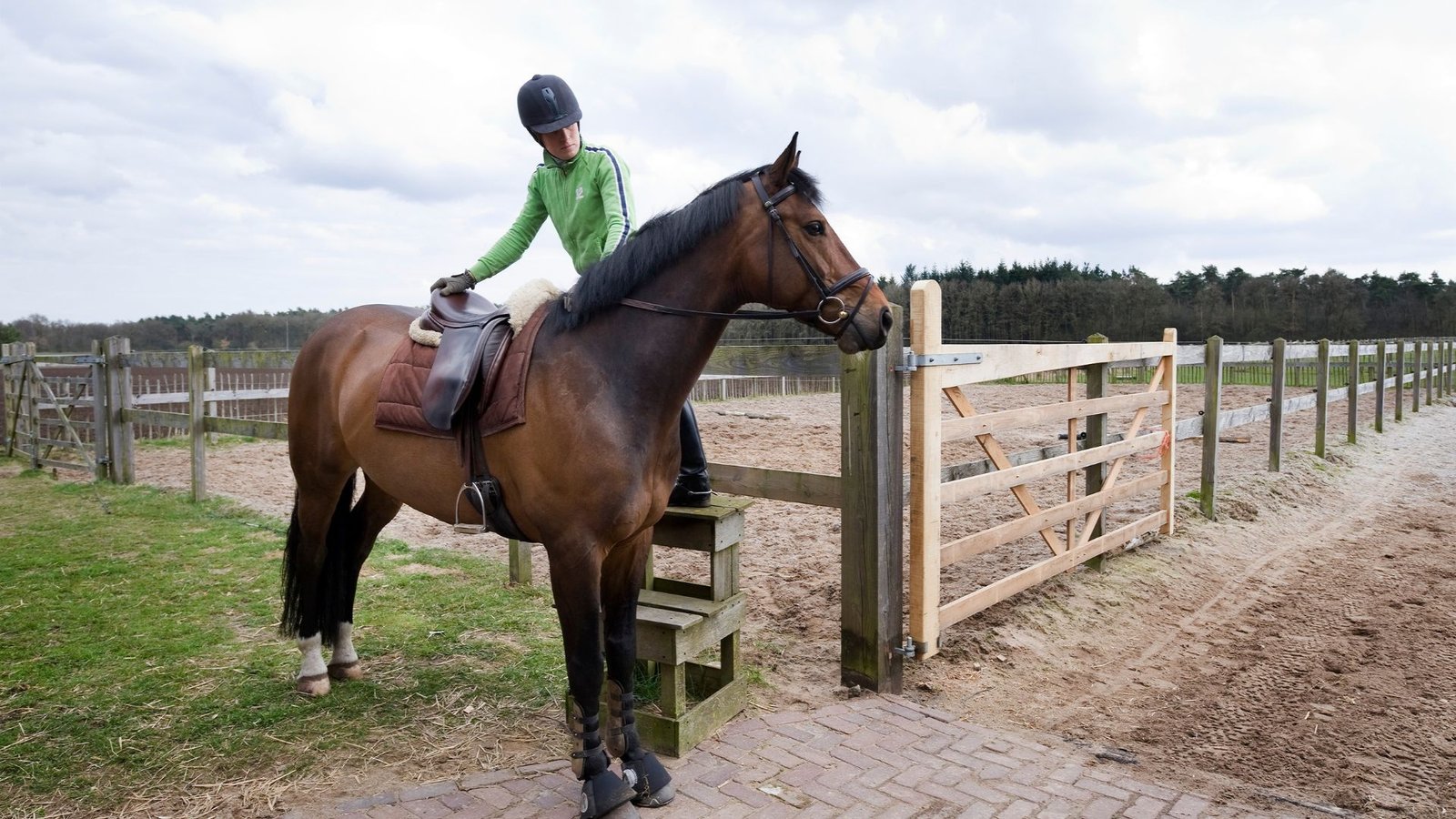|
Getting your Trinity Audio player ready...
|
Mounting your horse should be a smooth and stress-free experience for both you and your equine friend. In this guide, we’ll walk through simple and effective steps to teach your horse to stand still during the mounting process. Let’s make mounting a comfortable routine for your horse.

How to Teach Your Horse to Stand Still for Mounting
Understanding Why It Matters
Mounting may seem simple, but it’s crucial for a safe and enjoyable ride. When your horse stands still, it ensures a smooth start and builds trust between you and your horse. Think of it as the first step to a great ride.
Pro tip: Start in a calm environment. Begin training in a calm and familiar environment. A relaxed setting helps your horse feel at ease and more open to learning. Avoid crowded or noisy areas during the initial stages.
Building Trust with a Gentle Approach
Approach your horse gently and calmly. Trust is the foundation of successful mounting, and a kind approach sets the right tone.
Pro tip: Establish clear commands. Use consistent commands when working on groundwork. Horses respond well to clarity, so keep your cues straightforward. They’ll appreciate the simplicity of your communication.
Introducing the Mounting Block Gradually
Let your horse get comfortable with the mounting block at their own pace. Gradual exposure is key here. Tie a hay net nearby to create a positive association with the block, making it a pleasant spot.
Pro tip: Make the mounting block appealing. Add some tasty treats on or around the mounting block. This not only makes it more enticing but also associates the block with positive experiences. When introducing the feeling of weight on your horse’s back, go slow. If your horse seems uneasy, pause and give them a reassuring pat. Gradual progress is the goal.
Gradual Exposure to Weight
Slowly introduce the feeling of weight on your horse’s back. Lean over gently during grooming, letting them feel the pressure. Pro tip: Use this time to check for any signs of discomfort or tension.
Pro tip: Keep sessions short and sweet. Short, regular sessions work better than long, infrequent ones. Keep it positive and end on a good note. This helps your horse associate the training with a positive experience.
Associating Mounting with Rewards
Reward your horse generously when they stand still during the training. Treats, pats, and kind words work wonders. Pro tip: Be consistent with rewards to reinforce the behaviour you want.
Pro tip: Mix up the rewards. Occasionally switch up the rewards to keep things interesting. Your horse might appreciate variety, and it adds an element of surprise to the training sessions.
Repetition for Consistency
Consistency is your best friend in mounting training. Regular, short practices reinforce the behaviour. Pro tip: Vary the time of day and surroundings to ensure your horse generalizes the behaviour in different situations.
Pro tip: Know when to pause. If your horse seems stressed, take a step back. Pause the training and reassess. It’s crucial to go at your horse’s pace and not rush the process.
Addressing Restlessness with Patience
If your horse gets restless, stay calm and patient. Pro tip: Redirect their attention to the mounting block, using gentle cues. The key is to keep them focused and relaxed. If your horse is particularly anxious, consider having a helper. Pro tip: A calm and experienced friend can provide reassurance during the training process, making it a positive experience.
Transitioning to Actual Mounting
Gradually transition to full mounting. Pro tip: If your horse gets anxious, go back a step and reinforce their confidence. It’s a journey, not a race.
Pick the Right Time of Day
Choose the time for training wisely. Opt for moments when your horse is calm and not distracted. It’s like catching them in the right mood for a quick and effective session.
Use Distractions Sparingly
Minimize distractions during training. Keep it simple and focused, just like enjoying a quiet conversation. Too many distractions can make it harder for your horse to concentrate.
Switch Up the Routine
Variety is the spice of life, and the same goes for horse training. Change your approach occasionally to keep things interesting. It’s like adding a twist to your favourite recipe.
Practice Patience During Grooming
Grooming is more than just looking good; it’s an opportunity to build trust. Take your time, use gentle strokes, and let your horse enjoy the grooming process. It’s like a spa day for them.
Gradually Introduce Different Sounds
This can include gentle rustling, soft music, or even the sounds of nature. Therefore, familiarizing them with different noises contributes to a calm mounting experience.
Encourage Relaxation Before Mounting
Furthermore, create a relaxing atmosphere before mounting. Take a moment to stand beside your horse, patting them gently, and letting them know it’s time for a peaceful ride. Therefore, it’s like setting the mood for a delightful journey.
Conclusion
In conclusion, teaching your horse to stand still for mounting is about building a positive routine. Keep it simple, be patient, and always end on a good note. Hence, following these steps and pro tips will make mounting a breeze for both you and your horse.
You may find this information useful:
How to Teach a Horse to Cross Water
A Comprehensive Guide to Horse Riding
The Crucial Role of Trainers in Preparing Racehorses
